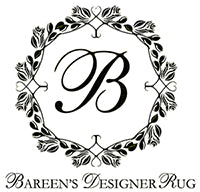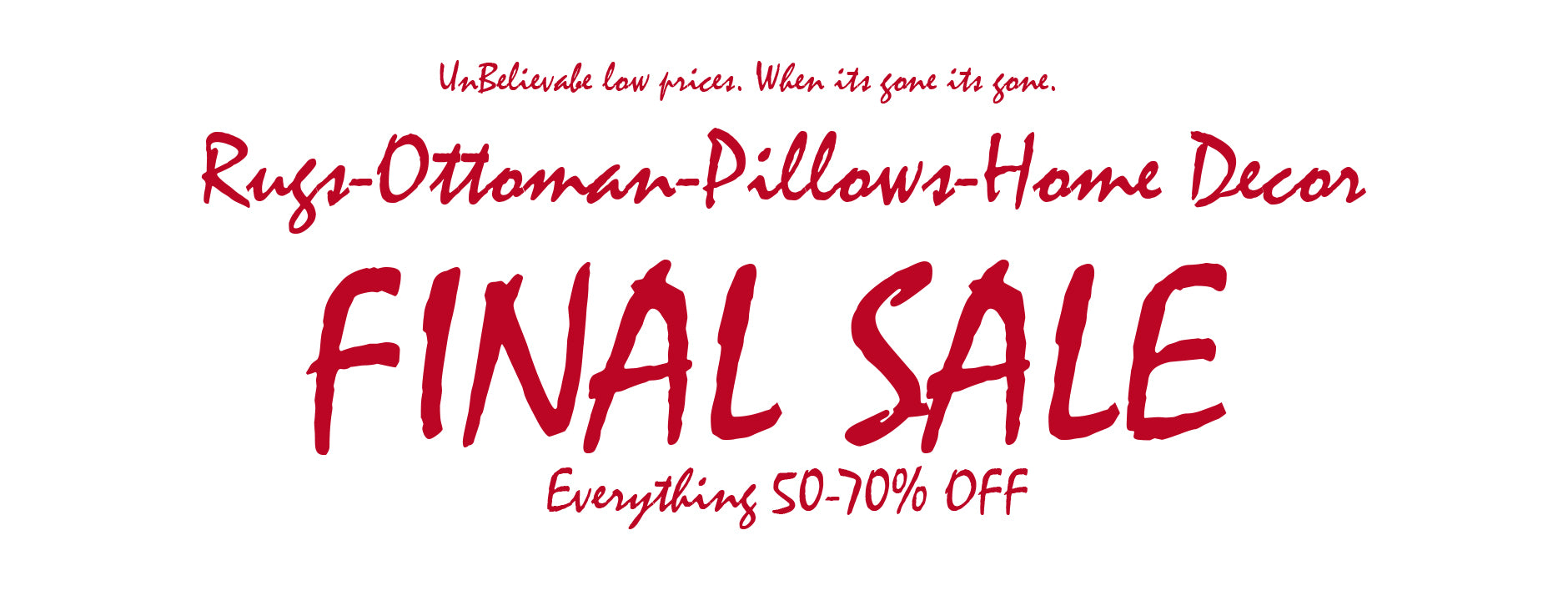RUG MAINTENANCE
Hand Knotted rugs gains value over the years if kept in a good condition. However, rug wear is inevitable. Bareens Designer Rugs has spent years researching and examining our products to make sure our cleaning methods are of the highest compatibility for our one of a kind product. At Bareens Designer Rugs we understand that area rugs trap dust, dirt and odors due to foot traffic; therefore cleaning and care are important to extend the life of your rugs. Even though area rugs are quite resilient and hide dirt well they can damage as a result of debris. Dust and dirt collect under the base of the rug and can damage fiber over time. Rotating a rug frequently can equalize the effect of wear.
Dampness can cause mildew or deterioration of the threads and fabrics of your rug. Avoid soaking your rug when cleaning a spill. Moths are another threat to a rug's longevity. To protect it, move your rug from time to time, and keep it exposed to air and light. Continual exposure to sunlight will eventually cause a rug's colors to fade and make the fabric brittle. Display your rug in such a way that it is protected against too much sunlight.
Cleaning an area rug on your own is risky; however you should clean a spill immediately with a white towel to contain the fluid damage. However, you should not use harsh chemicals or detergents as they may damage the fibers and materials in your area rug.
If you are looking to have your area rugs professionally cleaned, we have the equipment, training and experience to restore the beauty of your rugs. Our experienced professional technicians are certified and trained to recognize different fibers, constructions and types of rugs, along with their potential problems and the needed solutions. We offer several different types of hand cleaning processes including soak and rinse cleaning for pet stains and heavily soiled rugs, dry cleaning for delicate silks, and conservator cleaning for antiques. Bareens Designer Rugs deliver the professional results you can trust. Contact us; and our friendly and knowledgeable staff will answer your entire rug cleaning and care questions.
Here are few things that will help you keep your Area Rug(s) maintained:
Uneven WearA rug should be turned end-for-end once every year or two to even out wear and color change. Try not to use a rug on a very uneven floor. An area of the floor that is raised (a loose floorboard, a transition strip from one flooring material to another, etc.) causes the part of the rug that covers it to wear much more rapidly than the rest of the rug
Lay a Rug FlatIf a rug has been folded for shipping, there may be wrinkles or creases when you lay it down. To flatten them out, first determine which way the nap lays (rub your hand across the pile in the direction of the fringe: the pile will feel smooth one way and will roughen up when rubbed in the opposite direction).
Stand at the end of the rug with the nap running toward you. Roll the rug up from this end as tight as you can, then slowly unroll and smooth it down along the way. Persistent wrinkles in the same spot can be pressed from the face of the rug using a steam iron on "wool" setting (be sure to iron the pile in its original direction).
Persistent wrinkles should be attended to, as premature wear along the ridges made by the wrinkles can result. Some rugs have wrinkles "built in" as the rug is woven--try not to buy one of these!
Rug PadsFor Oriental rug care, rug pads are so useful, Pads under Oriental rugs can prevent sliding, prolong the life of the rug by cushioning the impact between shoe sole and hard floor surfaces, and provide comfort under foot. To determine if you need a pad, the rule of thumb is: a heavy, thick rug does not necessarily need one, whereas a thin, soft rug does, as does an older rug or a rug that has been rewoven or patched or which has a weakened foundation.
While a pad can extend the life of any rug, whether or not to use a pad under a new rug is often a personal decision based upon your preference for the feel of the carpet underfoot. A pad should be about an inch smaller than the rug all the way around (not counting the fringe) so that the pad will not show beneath the rug.
Pads can be made of materials like rubber, felt, polyester, or one of a number of synthetic foams. For a number of years we have preferred pads for larger rugs made of a polyester felt about 3/8" thick.
This material is quite dense and is mechanically strong. We have seen rubber pads crack and crumble around the edges with time, and occasionally rubber pads will become gummy and stick to an older floor finisher even to the back of the rug. Many of the synthetic urethane foam pads seem too soft and lightweight to provide much support to the rug.
StorageWhen a rug is to be stored for more than a few months it should be cleaned, sprayed with insecticide, and wrapped in protective plastic or a tough synthetic paper like "Tyvek"® building paper.
Don't use newspaper or common brown wrapping paper. These materials are not chemically stable (they are usually quite acidic), and do not provide the protection from insects or moisture the stored rug needs. Make sure the rug is completely dry.
Think twice about using moth balls or flakes--these materials have little repellent effect, and the odor they impart to the rug can be difficult to remove. Cedar scent is useless in moth control.
Store the rug in a clean, dry place out of the reach of squirrels or other rodents. Periodic inspection of the rug is strongly recommended
|
Stain |
Cleaning Method |
|
Acids |
Detergent/white vinegar |
|
Alcoholic beverages |
Detergent/White vinegar or cleaning fluid |
|
Ammonia or Alkali |
Detergent/White vinegar |
|
Ball-point pen ink |
Methylated spirits or turpentine |
|
Beer |
Detergent/White vinegar |
|
Bleach |
Detergent/White vinegar |
|
Blood |
Detergent/White vinegar or Starch Paste |
|
Burning cigarette |
Brush off with a hard edge |
|
Butter |
Cleaning fluid |
|
Candy |
Detergent/White vinegar or scrape and vacuum |
|
Cellulose paint |
Acetone |
|
Chewing gum |
Detergent/White vinegar or cleaning fluid |
|
Chocolate |
Detergent/White vinegar or cleaning fluid |
|
Coffee |
Glycerine |
|
Cosmetics |
Detergent/White vinegar or cleaning fluid |
|
Crayon |
Detergent/White vinegar or cleaning fluid or scrape and vacuum |
|
Egg |
Detergent/White vinegar |
|
Fat and Oil |
Tissue and iron, then cleaning fluid (Do not use iron after solvent) |
|
Fruit and juices |
Detergent/White vinegar |
|
Furniture polish |
Detergent/White vinegar or cleaning fluid* |
|
Glue |
Alcohol |
|
Grass |
Methylated spirits |
|
Gravy |
Detergent/White vinegar or cleaning fluid |
|
Grease |
Cleaning fluid or scrape & vacuum |
|
Household cement |
Detergent/White vinegar or cleaning fluid* |
|
Ice cream |
Detergent/White vinegar or cleaning fluid* |
|
Ink |
Water only |
|
Iodine |
Alcohol |
|
Jam |
Lukewarm water |
|
Lipstick |
Detergent/White vinegar or cleaning fluid* |
|
Medicine |
Call a reputable cleaner |
|
Metal polish |
Detergent/White vinegar or cleaning fluid* |
|
Mildew |
Call a reputable cleaner |
|
Milk |
Detergent/White vinegar or cleaning fluid* |
|
Mud |
Detergent/White vinegar |
|
Mustard |
Detergent/White vinegar |
|
Nail polish |
Polish Remover* |
|
Oils |
Cleaning fluid |
|
Paint |
Detergent/White vinegar or cleaning fluid* |
|
Perfume |
Detergent/White vinegar or cleaning fluid* |
|
Permanent ink |
Call a reputable cleaner |
|
Rust |
Call a reputable cleaner |
|
Salad dressing |
Detergent/White vinegar or cleaning fluid* |
|
Sauces |
Detergent/White vinegar or cleaning fluid* |
|
Shoe polish |
Detergent/White vinegar or cleaning fluid or scrape and vacuum |
|
Soot |
Vacuum, then cleaning fluid |
|
Tar |
Cleaning fluid |
|
Tea |
Detergent/White vinegar |
|
Vomit |
Detergent/White vinegar or cleaning fluid |
|
Wax |
Cleaning fluid or scrape & vacuum |
|
Wine |
Detergent/White vinegar or cleaning fluid w/water 50/50 Mixture |
Note: This is for informational purposes only. We do not take any responsibility how you use this. If you have any questions or need help. Please email your questions to info@bareens.com .





















